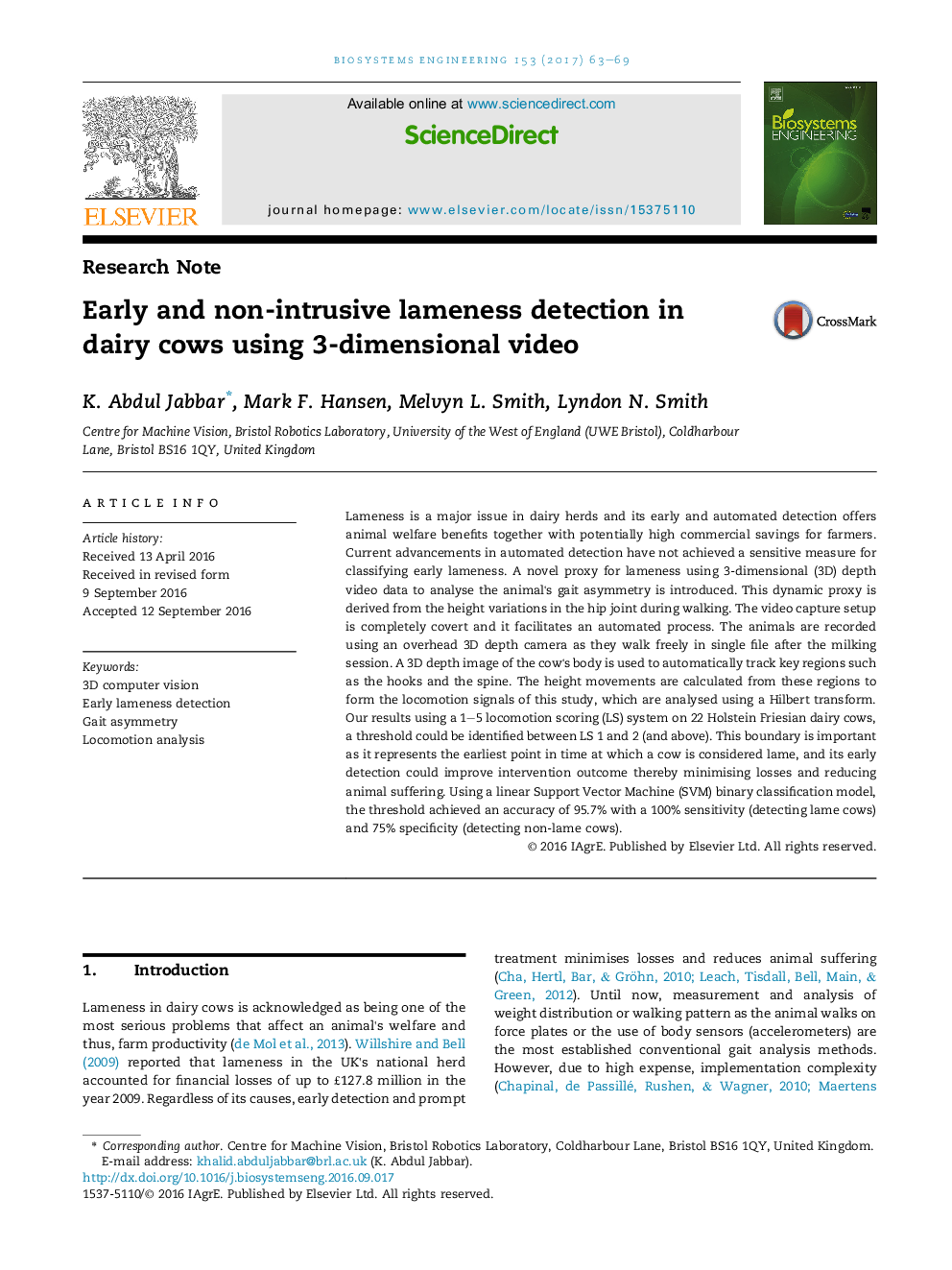| Article ID | Journal | Published Year | Pages | File Type |
|---|---|---|---|---|
| 5471922 | Biosystems Engineering | 2017 | 7 Pages |
Abstract
Lameness is a major issue in dairy herds and its early and automated detection offers animal welfare benefits together with potentially high commercial savings for farmers. Current advancements in automated detection have not achieved a sensitive measure for classifying early lameness. A novel proxy for lameness using 3-dimensional (3D) depth video data to analyse the animal's gait asymmetry is introduced. This dynamic proxy is derived from the height variations in the hip joint during walking. The video capture setup is completely covert and it facilitates an automated process. The animals are recorded using an overhead 3D depth camera as they walk freely in single file after the milking session. A 3D depth image of the cow's body is used to automatically track key regions such as the hooks and the spine. The height movements are calculated from these regions to form the locomotion signals of this study, which are analysed using a Hilbert transform. Our results using a 1-5 locomotion scoring (LS) system on 22 Holstein Friesian dairy cows, a threshold could be identified between LS 1 and 2 (and above). This boundary is important as it represents the earliest point in time at which a cow is considered lame, and its early detection could improve intervention outcome thereby minimising losses and reducing animal suffering. Using a linear Support Vector Machine (SVM) binary classification model, the threshold achieved an accuracy of 95.7% with a 100% sensitivity (detecting lame cows) and 75% specificity (detecting non-lame cows).
Keywords
Related Topics
Physical Sciences and Engineering
Engineering
Control and Systems Engineering
Authors
K. Abdul Jabbar, Mark F. Hansen, Melvyn L. Smith, Lyndon N. Smith,
